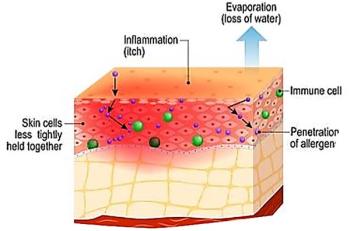
The Journal of Respiratory Diseases
- The Journal of Respiratory Diseases Vol 6 No 10
- Volume 6
- Issue 10
Clinical Consultation: Disinfectants and respiratory symptoms
As with any potential exposure, the initial approach should be to establish the patient's diagnosis before attempting to determine the effect of a potential exposure. The main differential diagnoses to consider for a patient who has cough and wheezing that may be associated with an exposure are asthma, chronic obstructive pulmonary disease, allergic rhinitis, and vocal cord dysfunction.
Respiratory symptoms triggered by cleaning agents: The workupWhat is the best approach to evaluating patients who report that a disinfectant is triggering their respiratory symptoms, such as cough and wheezing? How common is it for cleaning/disinfecting agents to cause respiratory symptoms in persons who do not use the product but simply work in an area where the product is used?
As with any potential exposure, the initial approach should be to establish the patient's diagnosis before attempting to determine the effect of a potential exposure. The main differential diagnoses to consider for a patient who has cough and wheezing that may be associated with an exposure are asthma, chronic obstructive pulmonary disease, allergic rhinitis, and vocal cord dysfunction.1
Pulmonary function testing, with the appropriate test for bronchial hyperreactivity (prebronchodilator and postbronchodilator spirometry or methacholine challenge, depending on baseline spirometry), is typically an essential part of the workup. Lung volumes, carbon monoxide-diffusing capacity, specific IgE serologic testing, and evaluation by an otolaryngologist may be indicated based on the history.
Once a diagnosis is reached, a determination can be made whether the disinfectant is aggravating a preexisting lung condition, has caused asthma via sensitization, or is acting as an irritant with no underlying lung condition. Identifying a disinfectant or any chemical exposure as the cause of the symptoms is important, because a patient who has become sensitized to a chemical and then has repeated exposure to that chemical typically will require more medication, be more symptomatic, and have worse pulmonary function test results than a patient whose exposure ceased soon after sensitization was identified.2
It is important to obtain a clinical history regarding the temporal relationship between the occurrence of symptoms and the exposure, and the nature of the exposure in terms of the type of chemical and how the chemical is being used. All chemicals, including cleaning agents, are required by law to have material safety data sheets (MSDSs) that employers are required to make accessible to their employees. These MSDSs include information on the content and health hazards of the cleaning agents.
Even if the manufacturer claims some of the information on the MSDS as a trade secret, manufacturers are required by law to make the trade secret information available on request to the treating physician. Physicians need to be aware that there are no requirements for a chemical manufacturer to test whether their products can cause sensitization, so the absence of information on an MSDS means it was never tested rather than the test results were negative.
Since the clinical history is sensitive but not specific,2 it is important to have objective testing before making clinical recommendations or writing a medical restriction for the patient; such restrictions or recommendations may have significant socioeconomic consequences for the patient. The gold standard for diagnosis is specific antigen bronchoprovocation testing with the chemical. However, this testing is available in the United States only on a research basis.
The alternative that is available to clinicians is to use the workplace and the patient's normal work activity as the challenge and order pulmonary function testing in relation to the patient's work. The availability of pulmonary function testing at the work site facilitates such testing for many health care workers who may be exposed to cleaning agents. Ways to do such testing include:
Spirometry before and after work during selected days or before or at the end of time away from work, such as a 1- to 2-week vacation.
Peak flow monitoring every 2 hours while awake, both at work and at home over 3 to 4 weeks.
Peak flow monitoring at least 4 times a day has better sensitivity and specificity than preshift and postshift testing.2 Cleaning agents are typically used intermittently and may be also used at home, so deciding when to schedule pulmonary function testing is important.
Clearly, respiratory symptoms associated with exposure to cleaning agents can occur in anyone in the area where such agents are used. In one study, my associates and I3 found that 78% of persons with work- related asthma from exposure to cleaning agents (80% new onset, 20% aggravation of preexisting asthma) worked in the area but were not using the cleaning agents. Those who were in the area but were not using the cleaning agents included nurses and nurses aides, clerical staff, opera-tors, repairers, managers/supervisors, teachers, and waiters/waitresses.3
Similarly, case reports of work- related asthma from cleaning agents have included many persons who did not use the cleaning agents but worked in the area where these chemicals were used. This included nurses,4 pharmacists,5 a laboratory technician,6 an office worker,7 animal laboratory workers,8,9 and respiratory therapists.10
References:
REFERENCES
1. Beckett WS. Current concepts: occupational respiratory diseases.
N Engl J Med.
2000;342:406-413.
2. Nicholson PJ, Cullinan P, Newman Taylor AJ, et al. Evidence based guidelines for the prevention, identification and management of occupational asthma.
Occup Environ Med.
2005;62:290-299.
3. Rosenman KD, Reilly MJ, Schill DP, et al. Cleaning products and work-related asthma.
J Occup Environ Med.
2003;45:556-563.
4. Purohit A, Kopferschmitt-Kubler MC, Moreau C, et al. Quaternary ammonium compounds and occupational asthma.
Int Arch Occup Environ Health.
2000;73:423-427.
5. Burge PS, Richardson MN. Occupational asthma due to indirect exposure to lauryl dimethyl benzyl ammonium chloride used in a floor cleaner.
Thorax.
1994; 49:842-843.
6. McCoach JS, Burge PS. Tall oil in a floor cleaning agent as a cause of occupational asthma.
Occup Dis Intelligence Network (ODIN),
September 1998.
7. Shelton D, Urch B, Tarlo SM. Occupational asthma induced by a carpet fungicide-tributyl tin oxide.
J Allergy Clin Immunol.
1992;90:274-275.
8. Dijkman JH, Vooren PH, Kramps JA. Occupational asthma due to inhalation of chloramine-T. 1. Clinical observations and inhalation-provocation studies.
Int Arch Allergy Appl Immunol.
1981;64:422-427.
9. Kramps JA, van Toorenenbergen AW, Vooren PH, et al. Occupational asthma due to inhalation of chloramine-T. II. Demonstration of specific IgE antibodies.
Int Arch Allergy Appl Immunol.
1981;64:428-438.
10. Dimich-Ward H, Wymer ML, Chan-Yeung M. Respiratory health survey of respiratory therapists.
Chest.
2004;126:1048-1053.
Articles in this issue
about 19 years ago
Case In Point: Unilateral agenesis of the diaphragmabout 19 years ago
An update on advances in interventional bronchoscopyabout 19 years ago
Exploring the link between nasal allergy and sinus infectionNewsletter
Enhance your clinical practice with the Patient Care newsletter, offering the latest evidence-based guidelines, diagnostic insights, and treatment strategies for primary care physicians.































































































































































































































































































































